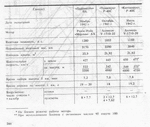Hi Claidemore,
>In one of the Soviet P40 pilot interviews he goes on quite a bit about the interviewers 'obsession' with max speed. He points out that in combat max speed was seldom attained,(when it was it was usually in a dive where the P40 held an advantage) and wasn't a critical factor in a fight.
Hm, to give a rough indication: At 6 km and up, the Me 109G-2 probably cruised around 50 km/h faster than the P-40 could do at emergency power. This limits the tactical options of the P-40 pilot considerably ...
In fact, if there is one universal, overriding trend in WW2 fighter design, it's the trend towards higher top speeds at the expense of manoeuvrability. Obviously, top speed was what combat experience showed to be critical, even if the mileage of individual pilots varied (In assessing the interview, you also have to take into account that a pilot necessarily focuses on the strengths of his aircraft because that's what he needs to do to survive.)
(In assessing the interview, you also have to take into account that a pilot necessarily focuses on the strengths of his aircraft because that's what he needs to do to survive.)
"Though this varied depending on the specific variants, the P-40 usually had an edge over Bf 109 in horizontal maneuverability"
With two aircraft using a very similar airfoil, having a similar wing loading and a similar power output, I really wonder how the one that's heavier than its opponent by a ton got the reputation of superior "horizontal maneurability" No way!
No way!
Regards,
Henning (HoHun)
>In one of the Soviet P40 pilot interviews he goes on quite a bit about the interviewers 'obsession' with max speed. He points out that in combat max speed was seldom attained,(when it was it was usually in a dive where the P40 held an advantage) and wasn't a critical factor in a fight.
Hm, to give a rough indication: At 6 km and up, the Me 109G-2 probably cruised around 50 km/h faster than the P-40 could do at emergency power. This limits the tactical options of the P-40 pilot considerably ...
In fact, if there is one universal, overriding trend in WW2 fighter design, it's the trend towards higher top speeds at the expense of manoeuvrability. Obviously, top speed was what combat experience showed to be critical, even if the mileage of individual pilots varied
"Though this varied depending on the specific variants, the P-40 usually had an edge over Bf 109 in horizontal maneuverability"
With two aircraft using a very similar airfoil, having a similar wing loading and a similar power output, I really wonder how the one that's heavier than its opponent by a ton got the reputation of superior "horizontal maneurability"
Regards,
Henning (HoHun)


